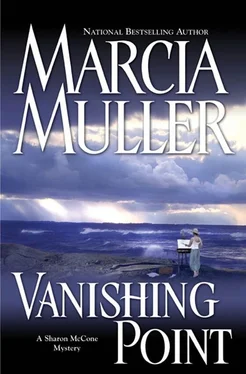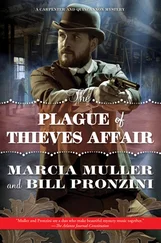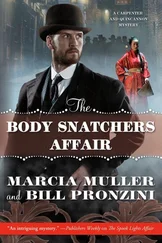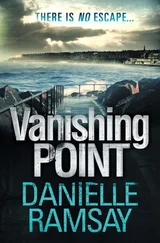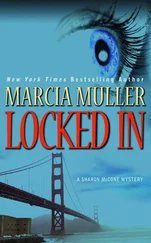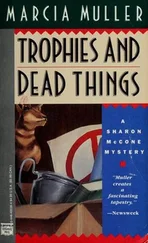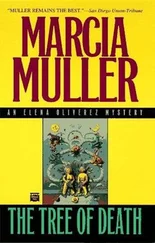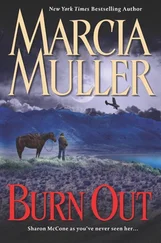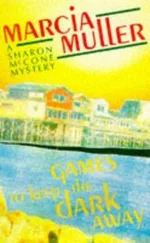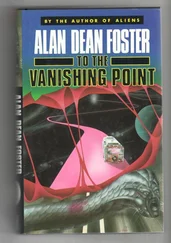I studied the photograph a long time, hoping for some hint of her secrets in the tilt of her head or the curve of her mouth. But they were well concealed-both from me and from whoever had looked through the lens at her.
AUGUST 19
As I headed west on Highway 46 to the coast, I drove out of the sunlight and into the fog. It billowed toward the car, rushed past, and closed behind me. Suddenly I was enveloped in a grayish-white world where ordinary objects took on unfamiliar shapes and headlights of approaching vehicles appeared out of nowhere. I slowed, wishing there were taillights in front of me to show the way. Of course, I reminded myself, there was no guarantee that another driver would know the road any better than I did.
Early that morning, Rob Traverso, the Paso Robles police detective, had called to postpone our ten o’clock meeting to four in the afternoon; fortunately I’d been able to reschedule my one o’clock appointment with Jacob Ziff for eleven. I hadn’t yet reached Ira Lighthill in Morro Bay, but I’d try again after I finished in Cayucos.
Ziff, according to Derek’s report, was an architect with offices in his home. He’d been thirty-four on the day he’d stopped at the overlook to speak with Laurel, which would make him fifty-six now. He was twice divorced, had an excellent credit rating, and owned both the house in Cayucos and a condo on Maui. No arrest record; the closest he’d come to entanglement with the law was giving a statement as to his conversation with Laurel and his later sighting of her at the Sea Shack.
The fog had thinned by the time the road intersected with Highway 1. The tourist town of Cambria and San Simeon, home of Hearst Castle, were to the right, Cayucos and Morro Bay to the left. I drove south between richly cultivated farmland and the flat, gray sea, past a tiny settlement called Harmony. After some ten miles, the highway split to form a bypass around Cayucos, and I spotted a narrow lane leading to an overlook on the cliffs. I turned in there, parked near the edge, and got out. Looked along the curve of the shore that Laurel had painted that day. Her easel, a finished canvas, and supplies had been neatly stowed in her Volkswagen bus, indicating an unhasty and untroubled departure from the overlook. I wondered if that final painting had remained in police custody or had been burned by Roy Greenwood, and made a mental note to ask Detective Traverso.
The wind blew off the water, strong but not cold. Already the fog was burning off above the coastal range, promising a clear afternoon. Like yesterday when I’d sat in the car in front of Laurel’s former home, I tried to capture some sense of what had gone on here twenty-two years before, but this was merely another roadside stopping place, through which thousands of people had passed since then. I checked my watch, saw it was nearly time for my appointment with Ziff, and got back in the car.
Studio Drive was at the lower end of town, a long residential strip that parallelled the main street to the west. The buildings there were a mixture: shingled cottages, Spanish-style villas, stucco bungalows, modernistic mini-mansions. Ziff’s was one of the latter, all sharp angles and redwood and glass, on the ocean side. I parked close to its high fence, went through a gate that opened into a tiny courtyard, and rang the bell. A voice called out for me to come around the side, and I followed a flagstone path to a door where a tall man in chinos and a polo shirt was waiting. He introduced himself as Ziff and took me inside to a large room with floor-to-ceiling windows that faced the sea. A computer workstation and storage cabinets took up the rear wall, and two drafting tables were positioned under a skylight. Ziff motioned at a grouping of leather chairs near the windows and said, “I’ll be right with you. Coffee?”
“Yes, please.”
He crossed to one of the drafting tables, picked up a pencil, and made a few notations on a set of plans that lay there. Then he poured mugs full of coffee from an urn that sat on a cabinet by the workstation.
“Cream or sugar?”
“Neither, thanks.”
He brought the mugs over and set them on a low table between two of the chairs. As we sat I studied him. He had curly silver hair, a bony, tanned face, and penetrating blue eyes that regarded me with frank interest.
“I’ve never met a private detective before,” he said. “You’re from San Francisco?”
“Right.” I handed him one of my cards.
He looked it over, then placed it on the table. “And you said on the phone that Laurel Greenwood’s daughter has hired you to look into her disappearance. It’s been a long time. I don’t know how I can help you.”
I set my recorder on the table. “I’d like to go over what you remember.”
“Wouldn’t it be better if you read the statement I made to the sheriff’s department?”
“Eventually I hope to. But first I’d prefer hearing about that day in your own words; it’s possible you may remember something that you didn’t tell the police.”
Ziff smiled, the lines at the corners of his eyes crinkling. “That’s the first time anyone’s suggested that my memory’s gotten better with age. But I’ll give it a try.”
“Thanks. According to the news reports, you were driving south on the coast highway that morning.”
“Right. Around eleven. I’d been up to Cambria to look over a building site. Had a one o’clock lunch with a client here in town, so I wasn’t in a hurry. There was an old VW bus parked at the overlook, and this woman had set up an easel beside it and was painting. I don’t know exactly why I stopped; it’s not like me to approach strangers. But there was something compelling about the way she was working.”
“Can you describe it?”
Ziff leaned foward, hands on his knees, staring out the window at the sea. “You know, I haven’t thought about that day in years, but now it’s all coming back. The weather-it was exactly the same as today. Well, maybe a little warmer. The fog was just beginning to burn off, and there were occasional flashes of sun on the water.”
I looked in the direction of his gaze, where faint glints of light had begun to dapple the gray waves.
“The woman,” Ziff went on, “she was so intense. Her posture, her motions. As if she was working on something very important. She didn’t seem to hear my car, didn’t look up till I was standing right beside her. And when she did she acted as if… as if she were waking up from a dream, or maybe as if I were pulling her back from some other world she’d been inhabiting. She wasn’t at all intimidated about a strange man coming up to her, just said hello.”
“And then you talked about what?”
“Her painting. It wasn’t bad. Representational, but something more, too; she’d captured the emotional feel of the coastline. I complimented her on her technique, and we discussed that for a while. She told me where she was from, and that she was a greeting card designer. That was about it. Two hours later I went to the Sea Shack to meet with my client, and she was on the oceanside deck, drinking wine and talking with this biker type.”
“Did you speak to her?”
“No. I don’t think she even saw me. My client arrived, and we went into the dining room. When we left the restaurant an hour later, they were both gone.”
“Can you describe the biker?”
Ziff thought for a moment. “Long dark hair. Leathers. No club logo or anything like that. He might’ve had an earring, but I can’t say for sure. I only saw him for a few seconds. But he stuck in my mind because I wouldn’t have expected a woman like that to be hanging around with someone like him.”
“A woman like what?”
Читать дальше
